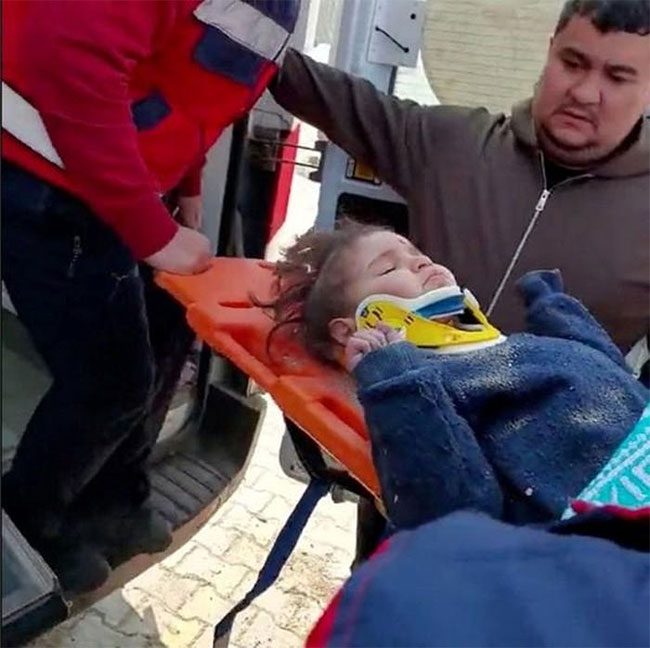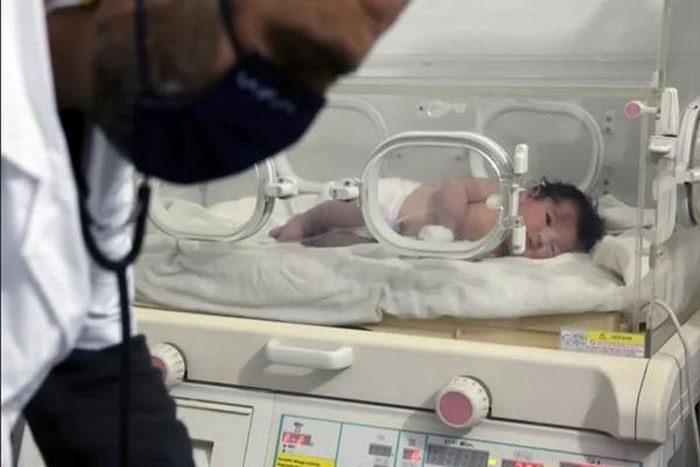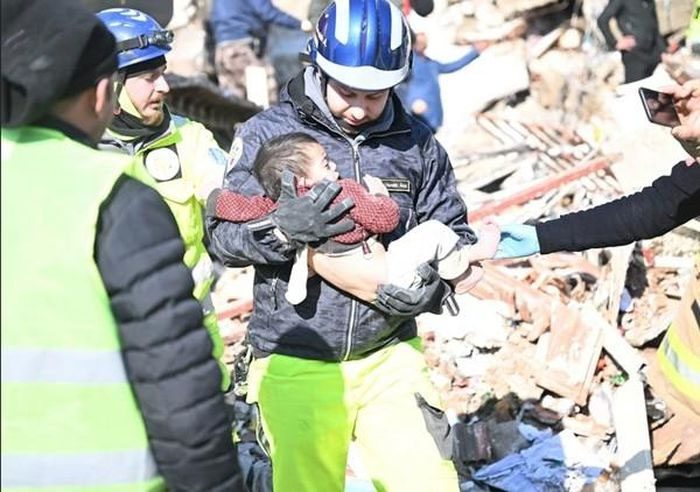More than 10 days after the earthquake disaster in Turkey, children are still being rescued from the rubble and are alive. Beneath the debris, in harsh freezing conditions, with no food or water, how are some children still surviving? Doctors have provided explanations for this phenomenon.
Many children are still being pulled from the rubble after the earthquake in Turkey and Syria – and they are alive, to the astonishment and joy of onlookers. These children are of various ages: 9 to 10 years old, 2 to 3 years old, and even infants. The earthquake disaster has claimed more than 41,000 lives, with many adults buried under the rubble unable to survive; so why are so many children surviving under such circumstances?

A girl in Hatay (Turkey) rescued after 150 hours under the rubble. (Photo: Turkish Ministry of Health/ Reuters).
According to Southern Early Childhood, an expert source on child development, children can generally survive without food longer than adults. This is because children have a higher water percentage in their bodies and lower body mass. Furthermore, children’s bodies utilize stored energy reserves more efficiently.
The site also notes that an adult can typically survive 3 to 4 days without food, but a child can survive for up to 2 weeks. Of course, these are average figures, and actual survival time depends on the individual child’s body and age.

An infant born under the rubble in Syria and rescued. (Photo: Ghaith Alsayed/ AP).
Regarding the survival of some infants, Kim Oates, an honorary professor of pediatrics at the University of Sydney (Australia), explains: “Healthy newborns have a large reserve of fluid to help them survive for a period without food. They also have substantial glucose stored in their livers. I believe the evolutionary basis for this is that if a mother experiences complications during childbirth and is incapacitated and unable to feed her child for several days, the infant can still survive. Evolution has been kind to humans in this way.”

A child rescued from a collapsed building more than 9 days after the earthquake. (Photo: NY Post).
Dr. Howard Chilton, a consultant pediatrician at Prince of Wales Private Hospital and the Royal Hospital for Women in Randwick (Australia), also states that infants “hold onto water” and have 15% body fat, allowing them to survive for several days without food. Dr. Chilton remarks: “The bodily functions of infants are designed for endurance and resilience in the early stages of life.”
However, doctors agree that the survival of some children for several days under the rubble after the earthquake can also be attributed to a very important factor: luck.


















































